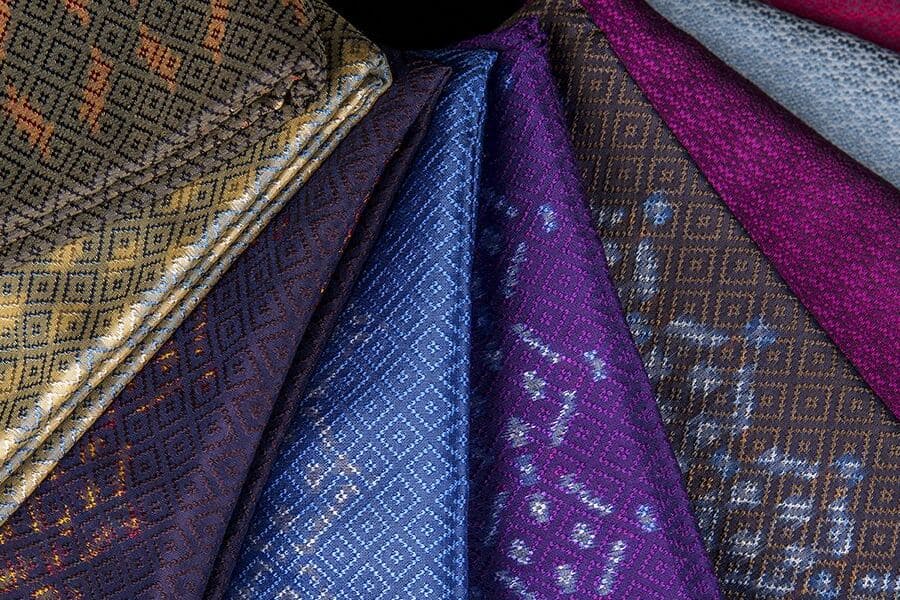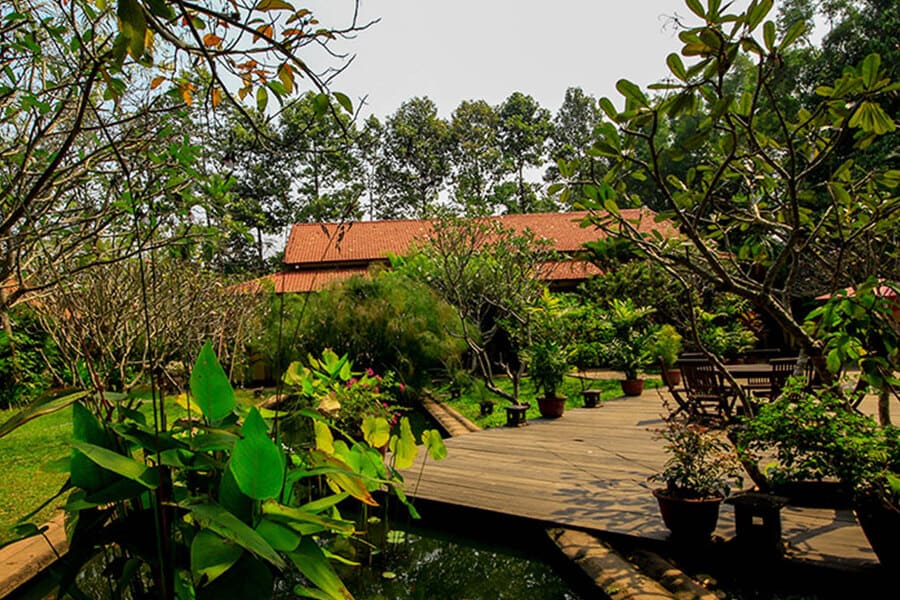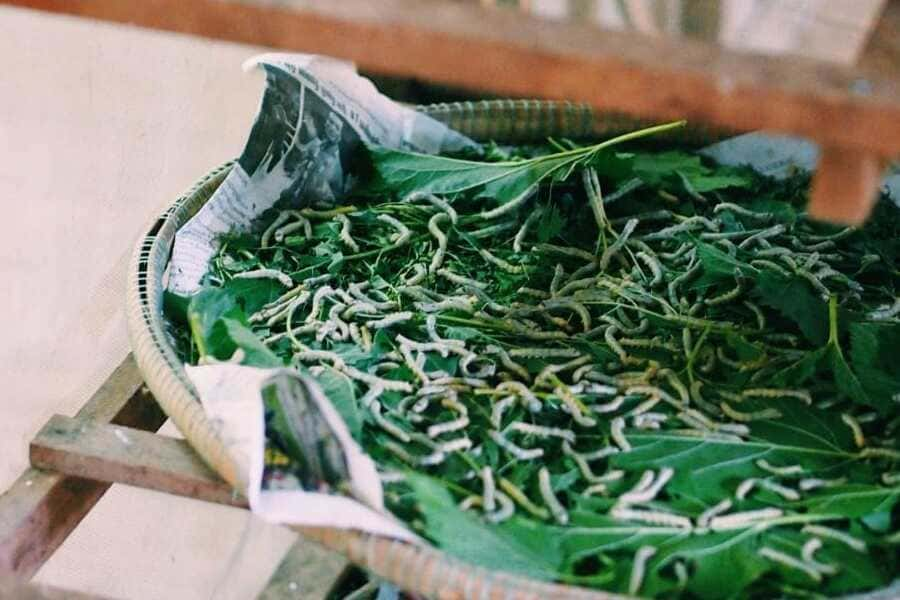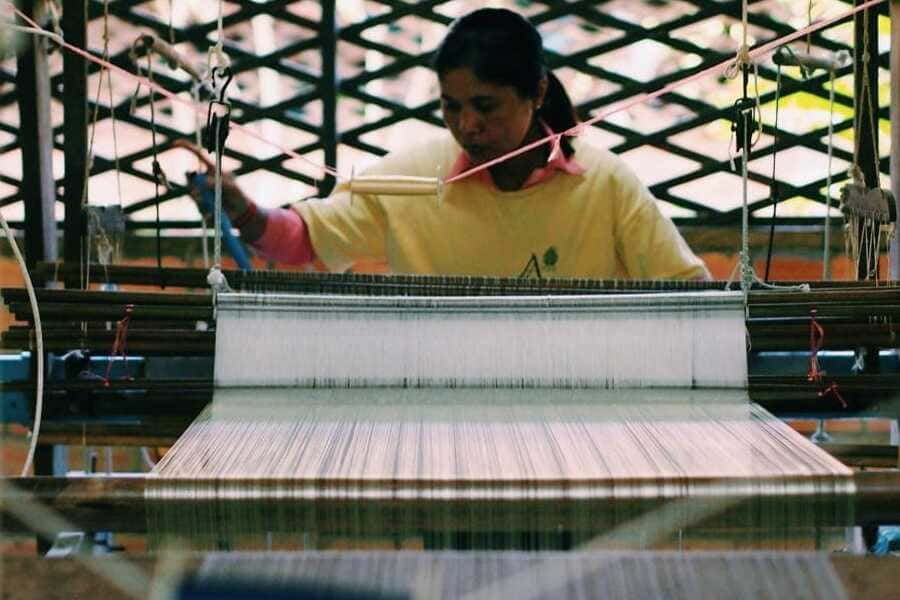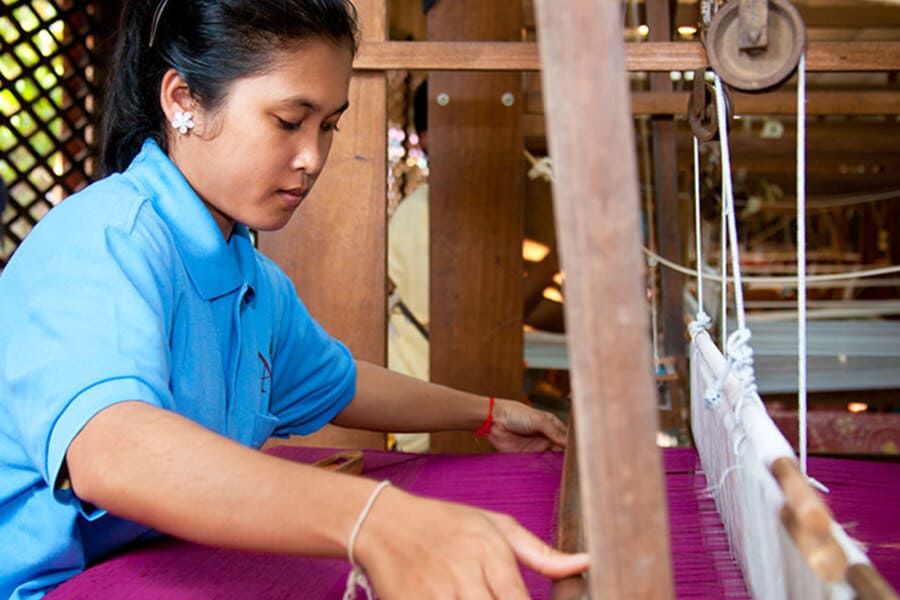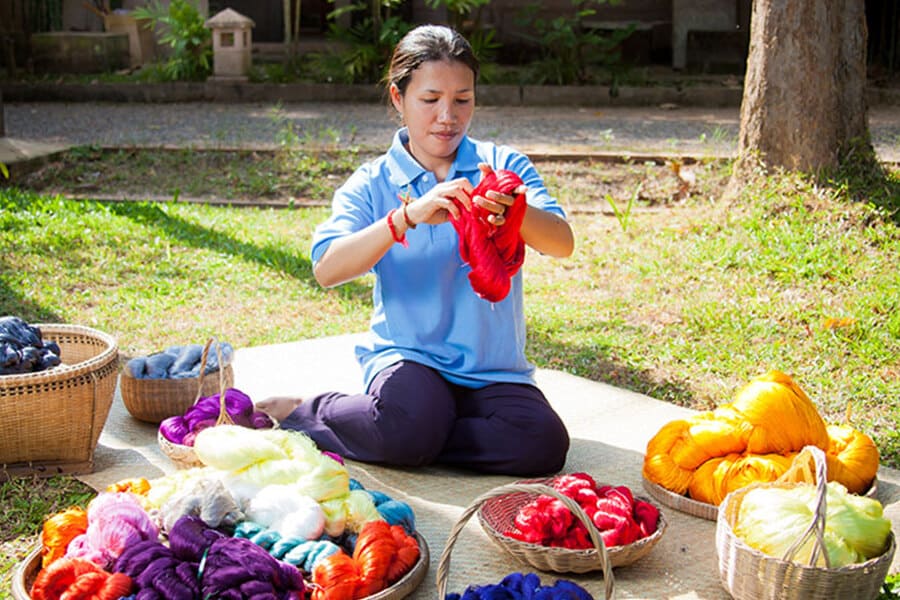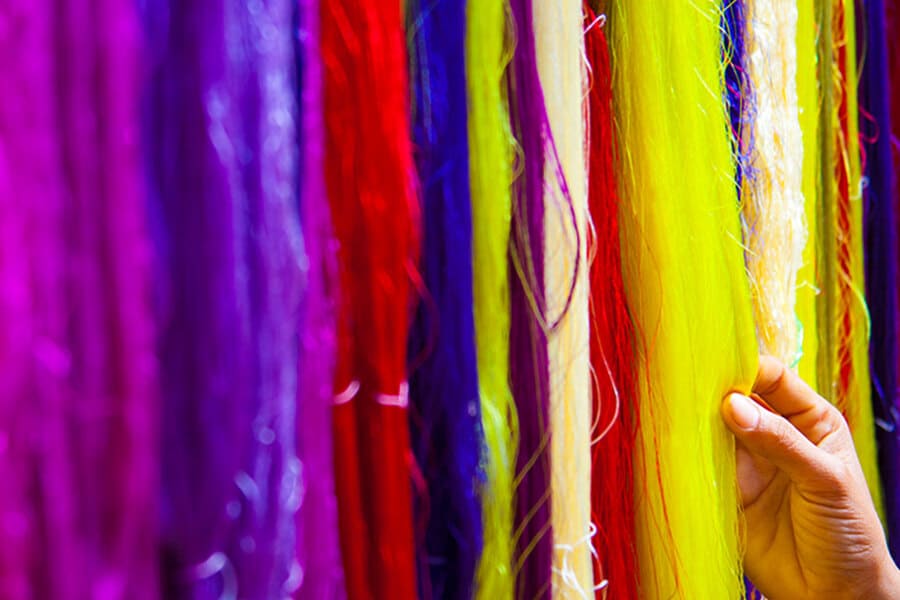During your Cambodia vacation, delve into the intricate world of silk production at the Angkor Silk Farm. Here, visitors can witness the entire process from nurturing silkworms to the art of weaving, gaining a deeper appreciation for Cambodia's rich cultural heritage and craftsmanship.
Contents
An overview of Angkor Silk Farm
The Angkor Silk Farm stands as a testament to Cambodia's rich textile heritage and the enduring artistry of silk production. Located in the picturesque countryside of Siem Reap province, near the iconic Angkor Archaeological Park, this captivating destination offers visitors an immersive experience into the intricate world of silk weaving.
Silk Production Process at Angkor Silk Farm
The silk production process at Angkor Silk Farm is a fascinating journey that begins with the cultivation of mulberry trees and ends with the creation of exquisite silk textiles. Here's an overview of the silk production process at Angkor Silk Farm:
- Mulberry Cultivation: The process starts with the cultivation of mulberry trees, which are the primary food source for silkworms. Angkor Silk Farm typically maintains mulberry groves to ensure a steady supply of leaves for feeding the silkworms.
- Silkworm Rearing: Once the mulberry trees are ready, silkworms are introduced to feed on the leaves. At Angkor Silk Farm, visitors can observe the different stages of silkworm development, from eggs to larvae to fully grown caterpillars.
- Cocoon Spinning: As the silkworms mature, they begin to spin cocoons using their silk-producing glands. The cocoons are carefully harvested by farm workers to preserve the delicate silk threads contained within.
- Silk Extraction: The harvested cocoons are then submerged in boiling water to soften the silk fibers and facilitate extraction. This process, known as degumming, helps separate the silk threads from the cocoon.
- Silk Reeling: After degumming, the silk threads are carefully reeled onto spools using traditional spinning wheels or mechanized silk reeling machines. This step produces long, continuous strands of silk thread that form the basis for silk weaving.
- Silk Dyeing: Once the silk threads are reeled, they may be dyed using natural or synthetic dyes to achieve a desired color palette. At Angkor Silk Farm, visitors can observe the dyeing process and learn about traditional dyeing techniques passed down through generations.
- Weaving: The final step in the silk production process is weaving, where the dyed silk threads are skillfully woven into intricate patterns and designs using traditional handlooms or mechanized weaving equipment. Angkor Silk Farm often showcases weaving demonstrations by skilled artisans, allowing visitors to witness the artistry and craftsmanship of silk weaving firsthand.
Visitor Experience at Angkor Silk Farm
Guided tours of the silk production facilities at Angkor Silk Farm
Angkor Silk Farm offers guided tours of its silk production facilities, providing visitors with an informative and immersive experience into the intricate world of silk production. Knowledgeable guides lead visitors through each stage of the silk production process, from mulberry cultivation and silkworm rearing to silk extraction, dyeing, and weaving. Visitors have the opportunity to learn about the history of silk weaving in Cambodia, the significance of silk production, and the traditional techniques used by artisans at the farm.
Hands-on activities and workshops at Angkor Silk Farm
In addition to guided tours, Angkor Silk Farm offers hands-on activities and workshops that allow visitors to engage directly with the silk production process. Visitors can participate in silk dyeing workshops, where they learn how to dye silk using natural or synthetic dyes and create their own unique designs. Workshops may also include silk weaving classes, where visitors can try their hand at weaving silk threads into intricate patterns under the guidance of skilled instructors. These interactive activities provide visitors with a deeper appreciation for the craftsmanship and skill involved in silk production.
On-site shops or boutiques at Angkor Silk Farm
Angkor Silk Farm features on-site shops or boutiques where visitors can browse and purchase a wide range of locally made silk products. The shops showcase a variety of silk textiles, including scarves, shawls, clothing, accessories, and home decor items, all crafted by skilled artisans at the farm. Visitors can choose from a selection of colors, patterns, and designs, each reflecting the unique beauty and quality of Cambodian silk. Purchasing silk products from the on-site shops or boutiques not only supports local artisans and sustainable tourism initiatives but also allows visitors to take home a piece of Cambodia's rich textile heritage as a memorable souvenir of their experience at Angkor Silk Farm.
How to get to Angkor Silk Farm?
To get to Angkor Silk Farm from Siem Reap, you can follow these transportation options:
Tuk-Tuk: Tuk-tuks are a popular and convenient mode of transportation in Siem Reap. You can hire a tuk-tuk from your hotel or any street in the city. Negotiate a fare with the driver for a round-trip journey to Angkor Silk Farm. The ride typically takes around 30-45 minutes, depending on the distance from your accommodation to the farm.
Bicycle: If you're feeling adventurous and prefer a more eco-friendly option, you can rent a bicycle from one of the many rental shops in Siem Reap. Cycling to Angkor Silk Farm allows you to enjoy the scenic countryside and immerse yourself in the local surroundings. The journey may take approximately 1-1.5 hours, depending on your cycling speed and route.
Car or Motorbike Rental: Renting a car or motorbike provides flexibility and convenience for travelers who prefer independent exploration. You can rent a vehicle from rental agencies in Siem Reap and drive to Angkor Silk Farm at your own pace. Be sure to have a valid driver's license and familiarize yourself with Cambodian traffic rules and regulations.
Organized Tour: Many tour operators in Siem Reap offer organized tours to Angkor Silk Farm as part of their itinerary. These tours typically include transportation to and from the farm, guided tours, and sometimes additional activities or workshops. Booking a tour is a hassle-free option for travelers who prefer a guided experience with transportation provided.

